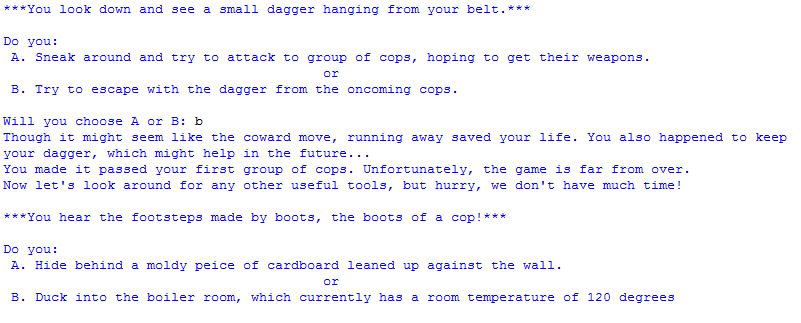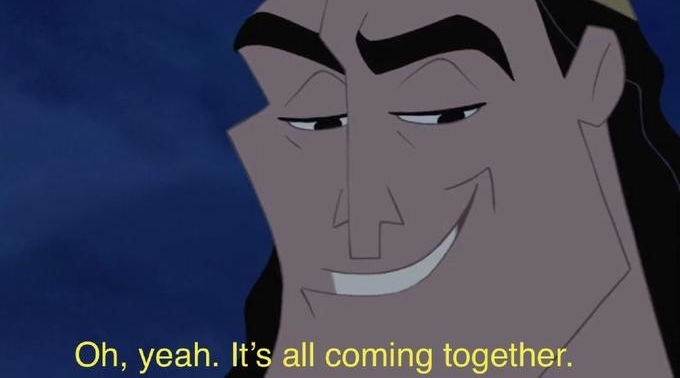This program focuses on a criminal’s journey through the cosmos, all while trying to escape the people he stole a diamond from. If you would like a more detailed overview of this program, my first post covers it. If you want some technicalities on the program or some highs and lows, my second post addresses that. If you want to know how it was built specifically, my third post has that covered. This post is the final one and will be looking at the program while it is running.

This first picture I think is one of the more important ones that I have selected, though it may not seem that way at first glance. This picture is of the very start of my program where I give the reader some backstory on the journey. Backstory is really important to a story, and that doesn’t change when it comes to my program. Without the backstory, the user would be lost and the questions would be meaningless. Now that the user has some backstory on the program and the main idea of it, they can appreciate and understand the rest of it. One of these features they could appreciate is the sprint function, or the procedure that makes the words print like they are being typed that very moment. Though this sprint function doesn’t really make a huge difference on the overall play of the game, I think it really ties the whole program together.

In this next picture, I would like to focus on the selected section (the part surrounded by a red boundary). If you don’t quite understand what it is, that is totally fine. This portion of my program give the user a chance to name their own character. I personally believe that this little section shows much about me and my programming abilities along with my personal skills. I first think that this shows that I am willing to put extra effort into both this program and any other tasks given to me. Anybody who knows how to code can write a simple program with a few features and be pleased with it, but I set myself apart from others by putting in extra time to make the user connect with my program. That is the other personal skill: being able to connect with people through your works. This skill is important and I use it here to help the user feel special.

The third photo I’ve selected shows two of the five scenarios. Here you are seeing the first two scenarios after the backstory is told. My favorite part about each scenario isn’t the many options I give the user, but how I do it. Not to sound like a geek, but I really like the format of how each scenario is posed. I think it looks clean and fluid with the program’s mood and I really, really love how it looks in code. Another small feature that makes an impact on the program is how each choice has a possible outcome that could affect the user’s ability to make other choices later. You can see this in action in the line that says “You also happened to keep your dagger, which might help in the future…” because whether or not you have the dagger will affect another scenario in the future.

This is the last picture I selected for this post. It was hard to choose a photo that had a big impact on the program that didn’t spoil the ending. This one is not a bad pick, though. This picture shows one of the responses by your “brain” when you answer one of the scenarios a certain way. This seems like a vague overview of this picture, but it is very hard to describe much this late in the program without spoiling some part of it. So basically it is one of the transitions between the effect of one answer and the beginning of another.
I also have a video of it on YouTube!
